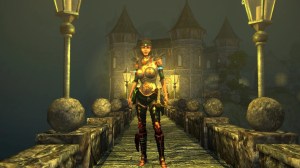There’s a problem in superhero comics that doesn’t seem to have a solution: what’s the best number to sell a series?
Videos by ComicBook.com
Ever since the New 52 launched and took every comic at DC back to #1, this problem has become increasingly noticeable. After DC took this approach, it was met by a large uptick in sales. Even though those sales did not last with steep drops by the third or fourth issue of most New 52 titles, the impact was large enough to provide them with an annual boost. The effect was so large that its primary competitor Marvel took notice and repeated the strategy, then repeated it again, and then again through a series of initiatives featuring buzzwords like “All-New” and “All-Different”. Marvel experienced similar bumps, but with diminishing returns.
While this is a problem that seems to strictly affect Marvel and DC, the two compose a majority of the direct market in American comics. Failures at either publisher can lead to shocks that shut down stores and close off customers. That means when they have a problem, the entire market might potentially have a problem. There are a variety of other “issues” facing both of these publishers and the market as a whole, but they need to be tackled “one” at a time.
That’s why we’re taking a look at the debate between renumbering comics or maintaining large numbers in continuity.
Big Numbers

Pros: The case for maintaining continuity in any series’ numbering is clear matter of, “if it ain’t broke, don’t fix it.” Series like Detective Comics and Action Comics lasted more than half of a century before their first relaunch. These stalwarts of comics stands show that the most successful series are undaunted by the large numbers on their covers, and a variety of examples go to show just how successful these big numbered issues can be. Batman #404 through 407 and Batman #608 through 619 formed the massive sales successes better known as “Year One” and “Hush”. They sold out their initial print runs before being collected and reprinted for decades to come.
There’s also the concept of legacy to be considered. Looking at a number like 404 or 608 might show proof to a reader that a story is already successful, and that if they enjoy the current story, then there’s plenty more to be discovered. It’s also a delight for older fans and collectors to complete long runs of hundreds of issues that create a clear path from start to a constantly shifting finish.
Cons: Those big numbers can also be daunting, especially to new readers. While “Hush” has become a fundamental introduction point to DC Comics, it’s still much easier to sell that collection under an intriguing title than it is to push Batman #608 on a new reader. It’s not that selling an issue with a big number is impossible, but the number alone raises enough questions that some readers may never bother to take the risk of picking up that first comic.
Do I need to read the rest of this story? How will I ever find what came before? When do I need to start? These are all valid questions that someone, even someone who currently reads superhero comics, may ask when looking at an issue numbered in the hundreds. For better or worse, it is a real barrier to some.
Small Numbers

Pros: There’s a reason that #1 issues are often associated with a boost in sales. That number signals the start of a story and a collector’s item, pleasing all sorts of comics fans. For new readers, it presents the most approachable point of entry as there’s no indication of history or continuity needed to appreciate the issue itself, although this isn’t always the case. Even when a comic reaches #10 or #20, it’s easy for readers to believe they can catch up through collections or jump into a story without too much already occurring.
That belief can be greatly assisted by the timely publication of cheap collections or decreasing prices on former issues. With the right structure, both stores and publishers may reasonably ask readers to invest in an entire series instead of taking a leap of faith into the middle of one. Small numbering makes the arc of a story clear and reassures everyone involved that what’s behind the cover is consistent in quality and style.
Cons: Unfortunately small numbers don’t last forever. On a monthly publishing scale, the same problems of large numbers emerge within five years, just as DC Comics recognized by the end of the New 52 initiative. In the current bi-weekly schedule of most comics in the Rebirth line, that problem has become evident after just over a year. In order to maintain the advantages of small numbers, regular relaunches become a necessity.
Those relaunches come at a cost. Each relaunch of series at Marvel Comics over the past five years has been met with a boost in sales, but they are boosts that become smaller each and every time. The long-term result is an overall decrease in sales. While a new #1 encourages readers to try a new series, it also provides current readers an easy point of exit. A proliferation of relaunches also creates confusion for new readers. If someone were to look for a starting point to explore Rocket Raccoon, they could find five initial collections from the last five years. An overabundance of starting points is just as large of an obstacle as an overlong history, if not moreso.
How to Proceed?

The pros and cons on both sides of the numbering debate provide no clear winner. So what’s the solution?
There are possible elements of compromise to be found between the two sides. Marketing starting points for ongoing series without a complete renumbering is being tried at Marvel Comics right now, with large red #1s signalling alongside ongoing counts. A possible two-tiered system could be tried that track both a run count and ongoing series count, but unless executed perfectly, such a system could create even more confusion. A seasonal method has been suggested as well in which stories cycle together over a series of years, so that readers could be pointed to distinct starting points in a given era. This may reflect DC Comics’ current plan with Rebirth in which the entire line is being utilized to tell a massive two-year epic, in addition to the unique events of each series.
The real answer might be that there is no one right fit for all series. While Image Comics, often an outlier of Marvel and DC Comics’ models, succeeds with many new series that rarely cross #50, they also have two of the longest ongoing superhero comics of all time in Savage Dragon and Spawn. Superhero comics with massive counts could be just as attractive as those that only reach #12 or #20, if those decisions are purposefully made. Consider two relatively recent successes, the aforementioned Batman and Hawkeye. Batman is a known quantity, and one that will be on comics store shelves for the foreseeable future. It makes sense to have a large number on the cover, but the very presence of an accessible character like Batman negates many of the problems. The launch of Matt Fraction and David Aja’s Hawkeye was successful in part because it offered something new, both in numbering and style. Hawkeye is not a mainstay in ongoing Marvel Comics series, and there was not a proliferation problem to begin with. The #1 attracted curiosity for a character that was seldom seen on his own.
The choices of continuing Batman and jump-starting Hawkeye were purposeful. They lowered the barriers to entry most associated the stories being told and, most importantly, delivered a great story to hook readers that picked up an issue. The decision between big and small numbers is not a universal choice, but one that should truly be judged on a case-by-case basis.








